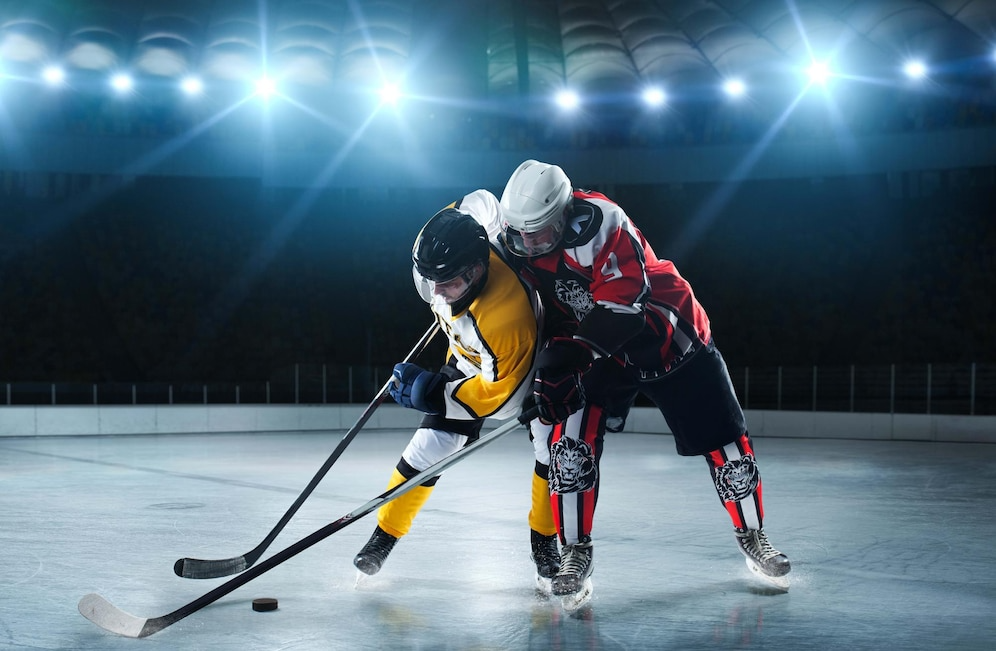Hockey is an energetic game. The players and puck move around the rink at a rapid speed, making the game incredibly entertaining. The activity is practically nonstop, and because the puck goes so quickly, it can be tough to keep up.
However, there are also restrictions in place that limit the movement of the puck and limit where it may go at particular periods. This is to guarantee that the game remains fair and that its integrity is not jeopardised.
Icing is one of these rules. When a player shoots or passes the puck from behind his own side of the centre red line and it crosses the other team’s goal line, it is termed icing. When this occurs, play is halted and a faceoff is taken in the zone of the offending team.
While many fans are aware of icing, few understand why it is used, how it works, and the numerous complexities and subtleties that surround it. In an effort to assist, this article will take a thorough look at what icing in hockey is in order to provide you with a better knowledge.
What is Icing?
1. What is offside and icing in hockey?
As already mentioned, an icing call occurs when a player shoots the puck from his team’s side of the red line and it crosses the opposing goal line. When the official catches it, he will blow the whistle and the puck will be iced in the zone of the team who iced it.
A defender cannot, of course, simply sit near the puck and wait for it to cross the goal line. The official may not call icing if he feels the other side had a chance to play the puck before it was iced. In these cases, it is frequently up to the ref’s judgement.
Players may ice the puck for a variety of reasons. The most common is to clear the defensive zone and get the puck out to allow for a line change or to relieve the pressure being applied by the other side. Players may accidentally frost it by shooting it too far.
Also, ice can occur if a pass is performed incorrectly or a long-distance shot is not precise.
2. How and for what reason was icing established in the NHL?
So, why was this icing regulation first executed? In the past, multiple teams would blast the puck down the ice to extend the game. If they were winning, they would simply blast the puck towards the opposing end, making it harder for their opponents to score.
This was not only frustrating for the players on the losing team, but it was also unpleasant for the spectators. The last minutes of games were frequently tedious and irritating to watch, with little to no actual hockey being played.
Icing was invented to put an end to this behaviour. The regulation was made official in 1937 and has benefited the flow of the game by ensuring that no side can just waste the time if they want to win. If a team wants to win, it must play hard from the first puck drop to the final horn.
3. There aren’t any line movements after icing the puck.
While icing always contributed to the other side having to take a faceoff on their end, it was nonetheless done on occasion. In a desperate defensive scenario, it was frequently better to ice the ball and get a faceoff than to allow the attacking side to hold possession and score.
Sure, the faceoff in their end wasn’t perfect, but it was far superior to the attacking team getting the ball and setting up a play. There were relatively few disadvantages to using an icing call in some instances.
As a result, the NHL updated its icing policy. If a team ices the puck, no line alterations can be made before the subsequent faceoff. This indicates that the team will have fatigued players on the rink versus the other side’s fresh skaters.
The law in question was not implemented until the 2005-06 NHL season, but it has done an excellent job of discouraging icing by requiring players to be careful, especially if they are tired. If not, players may be forced to play defence when weary, giving the opposing side a higher chance to score.
4. Player Changes that are as an Impact of Icing
Once icing became a rule, players had to entirely alter their game. When it came to firing the puck down the ice, they needed to be considerably more cautious, especially if their line was fatigued and worn out.
A lot of players, however, learned to adapt and realised that they could still enjoy the benefits of icing (being able to line change and clear the puck) without really icing it.
Players today will frequently flip the puck high into the air and blast it into the opposition zone when clearing the puck from their own zone. While the puck will not travel as far as if they fired it along the ground, icing will be avoided.
Not only that, but as the puck gains height, teams may still make line changes to get fresh players out there before the opposition side grabs the puck. So, while the icing regulation reduces time-wasting, players have evolved to continue reaping the rewards.
5. Icing is not always required.
Although covering typically is enforced, you may notice anything that appears to be icing that is not named. This is due to the fact that ice is not required in all situations and conditions.
To start with, if a team is killing a penalty, they can easily shoot the puck down into the other zone and ice it without being called for icing. When a side has a power play and the opposition team is unable to ice the ball, that is just an unfair advantage.
Furthermore, whereas it may be requested, icing is no longer automated. If the icing team touches the puck first behind the goal line, icing is frequently waved off. Unfortunately, this resulted in many deadly races to the puck, leading to the no-touch/hybrid icing rule.
This regulation eliminates the race to touch the puck and replaces it with a race to the faceoff dots. An icing infraction is called if the defense beats the icing team there. If a player from the icing team gets to the dots first, whomever touches the puck first determines whether or not a play constitutes icing.
It might be an unclear rule, but it was introduced to allow for competitive advantages for the loose puck while preventing aggressive collisions and checks from behind into the boards. While the NHL uses no-touch/hybrid icing, numerous other leagues use classic icing regulations.
Icing is an essential regulation in hockey because it prevents teams from stalling the game and running the time out. If you believe I forgot to include something vital regarding frosting, please leave a comment and let me know!












